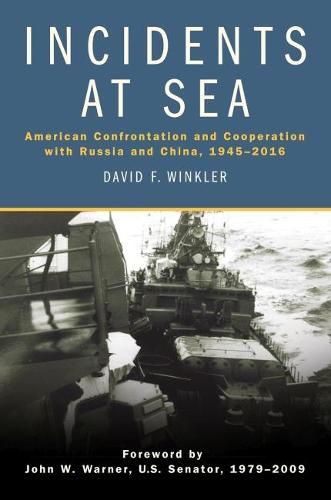Incidents at Sea: American Confrontation and Cooperation with Russia and China, 1945-2016
David F. Winkler,John Warner

Incidents at Sea: American Confrontation and Cooperation with Russia and China, 1945-2016
David F. Winkler,John Warner
Free to patrol the skies and surface of the high seas under international law, U.S. and Soviet naval and air forces made daily direct contact during the Cold War. Often confrontational and occasionally violent, air-to-air contacts alone killed more than one hundred Soviet and American aviators during the Truman and Eisenhower years. Diplomacy to curtail the hostility produced mixed results. In the 1960s, the Soviet navy challenged U.S. naval dominance worldwide and collisions and charges of harassment became common. In 1972, the two nations signed an Incidents at Sea Agreement (INCSEA) that established navy-to-navy channels to resolve issues. This agreement, still in effect between the U.S. and Russia, is the focus of David Winkler’s study. Here Winkler argues that Soviet and American naval officers, sharing bonds inherent in seamen, were able to put ideology aside and speak frankly. Working together, they limited incidents that have had unfortunate consequences. The process they established served as a model for similar accords between other maritime nations. With the emergence of China has a maritime power, elements of the US-Russia accord were adopted to assure peaceful interactions between American and Chinese naval forces. Drawing on previously unavailable State Department files, declassified Navy policy papers, discussions with former top officials, interviews with individuals who were involved in incidents, Winkler details the U.S.-Soviet naval relationship through the end of the Cold War and beyond. Since the publication of Cold War at Sea: High Seas Confrontation between the United States and Soviet Union by the Naval Institute Press in 2000, confrontations at sea still occur, but efforts continue to limit their frequency and impact on international relations. In this volume, Winkler expands the narrative to bring the story to the present, detailing occasional U.S.-Russia naval force interactions such as the April 2016 Russian aircraft buzzings of the USS Donald Cook in the Baltic. He also details China’s efforts to militarize the South China Sea, claim sovereignty over waters within their economic exclusion zone (EEZ), and the U.S. Navy’s continuing efforts to counter these challenges to the freedom of navigation. Overall, because of the regimens put in place, incidents at sea have become a rarity. While those who negotiated these regimens deserve recognition, it is the seaman and aviators who operate on the world’s oceans who deserve the ultimate acclaim for their professionalism in assuring that the agreed upon protocols were implemented.
This item is not currently in-stock. It can be ordered online and is expected to ship in approx 4 weeks
Our stock data is updated periodically, and availability may change throughout the day for in-demand items. Please call the relevant shop for the most current stock information. Prices are subject to change without notice.
Sign in or become a Readings Member to add this title to a wishlist.


